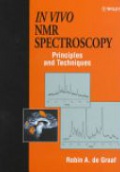In Vivo Glucose Sensing
David D. Cunningham,Julie A. Stenken
ISBN: 9780470112960
Vydavatelství: Wiley
Rok vydání: 2010
Vazba: Hardback
Počet stran: 472
Dostupnost: Skladem
Původní cena: 3 823 Kč
Výstavní cena:
2 867 Kč(t.j. po slevě 25%)
(Cena je uvedena včetně 10% DPH)
Katalogová cena: 90.5 GBP
Nárok na
dopravu zdarma
Termín dodání na naši pobočku v Brně je přibližně 3-4 týdny.
Leading experts explain the many approaches to in vivo glucose sensing and point to new directions in research Soon, people with diabetes will be able to depend on reliable, user–friendly in vivo glucose sensing systems to monitor their blood sugar levels. This volume brings readers fully up to date with recently commercialized in vivo sensing systems as well as current efforts to develop new and improved systems. The authors, leading pioneers and researchers in the field, include an MD and both academic and industrial researchers. Together, they review the many approaches to solving the "glucose sensing problem," helping readers apply the latest technology and advance their own research efforts. Following an introductory chapter that sets forth the promise and challenges of glucose sensing, the book explores: Understanding and controlling the wound–healing response to facilitate implanted sensors State–of–the–technology implants, including electrochemical sensors and microdialysis devices New approaches to develop non–invasive, optical–based methods for measuring in vivo glucose Chapters describe both analytical approaches and in vivo results, underscoring the need for a deep understanding of sensing technology as well as human anatomy and physiology. Throughout the book, detailed figures help readers better understand how and why various sensor systems work. In addition, color reproductions of tissue and histological slides draw attention to important features of the body tissue/sensor interface. From established technologies to the most recent research advances, this book explains the current state of knowledge, sets forth the challenges, and points to new breakthroughs for in vivo glucose sensing.
